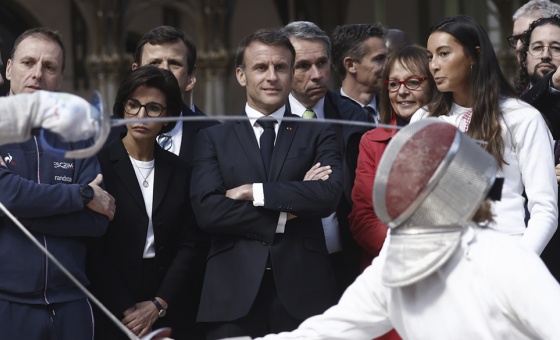This is the last article you can read this month
You can read more article this month
You can read more articles this month
Sorry your limit is up for this month
Reset on:
Please help support the Morning Star by subscribing here
IN CONTRAST to their still-life 17th-century depictions, modern visual representations of music are perhaps better suited to technologies of sound and the regulation of the senses.
Instead of a lute poised alongside a half-filled goblet, the artist would depict an AirPod or iPhone next to a can of Red Bull, with the latter possibly taken as an allegory for a modern world in which rampantly individualistic music consumption is paralleled by communal musical silence.
That quietude is present in Jan Brueghel the Elder’s The Sense of Hearing (1618), in which the implied sonic space, for all its excess of lavishly represented instruments and scores, is strikingly lacking in representations of actual musical sound being made.
The painting is part of Brueghel’s famed cycle of five works allegorising the human senses that were commissioned by the city fathers of Antwerp as gifts for Archduke Albert and his wife Isabella on their official visit in 1618.
Within the world of the picture, the only music-making is either mythic or marginal — a naked duo comprised of the lute-playing Venus and the demurely singing Eros — and it is the symbolic stuff of legend, like a visitation from one of the paintings hanging on the back wall or on the lid of the harpsichord, conveniently propped up by the scroll of the bass viol.
A human presence is reduced to distant figures in the back left corner, with the music to be imagined only faintly, if at all, by the viewer. Brueghel’s canvas is paradoxically empty and full — music, that highest calling of human hearing, is evoked by its virtual absence.
The plentiful, but silent instrumentarium so masterfully depicted eloquently accepts, even celebrates, painting’s congenital muteness.
Though music is more absent than present in the painting, its potential is displayed in all its combinatorial plenty. Arrayed before the viewer are nearly unlimited possibilities of performance on instruments and by unseen voices of the music arranged on the circle of stands.
Like all allegories, the painting raises far more questions than it answers. Our puzzlement at the apparently recent — and imminent — uses of the instruments and partbooks is mirrored by the scrutiny a phlegmatic toucan gives the sackbut shoved under the harpsichord.
Like the other feathered musicians in the painting, this bird is a virtuosic singer and therefore seems not a little sceptical of the merits of the instrument he considers. Perhaps the pair will have a go at the madrigal?
The partbooks arrayed around the table are from the recusant English Catholic composer Peter Philips’s second book of madrigals published in 1603 and dedicated to the ruling couple of the Spanish Netherlands, the Hapsburg Archduke Albert and his wife Isabella.
The music seen in the picture is Philips’s madrigal Qui, sott’ombrosi mirti, which lauds the ruling couple using many of the motifs beloved by Brueghel in his paintings — flowers and woodland nymphs — and the painting also dramatises music as a sensual art, brought to life by Eros, who himself sings directly at us, in contrast to the more modest Venus who coyly turns away.
Other allegorical elements further play up the acoustic sensuality. The stag is a common 17th-century symbol for the power of hearing. This beast is recently matured, with a still-stubby rack. His cocked ears show that his hearing is aroused, and so suggests sexual excitement, too. The displayed headdress of the cockatoo perched near Venus’s right elbow does the same.
Brueghel shows in his painting that for all its aural emptiness, it depicts a culture far fuller of musical feeling than our modern one, so saturated in sound. Tethered to its digital feed, this newer sense of hearing has the world of song at its fingertips and is all the more lonely for it.
This is an edited version of an article that first appeared in Counterpunch, counterpunch.org










